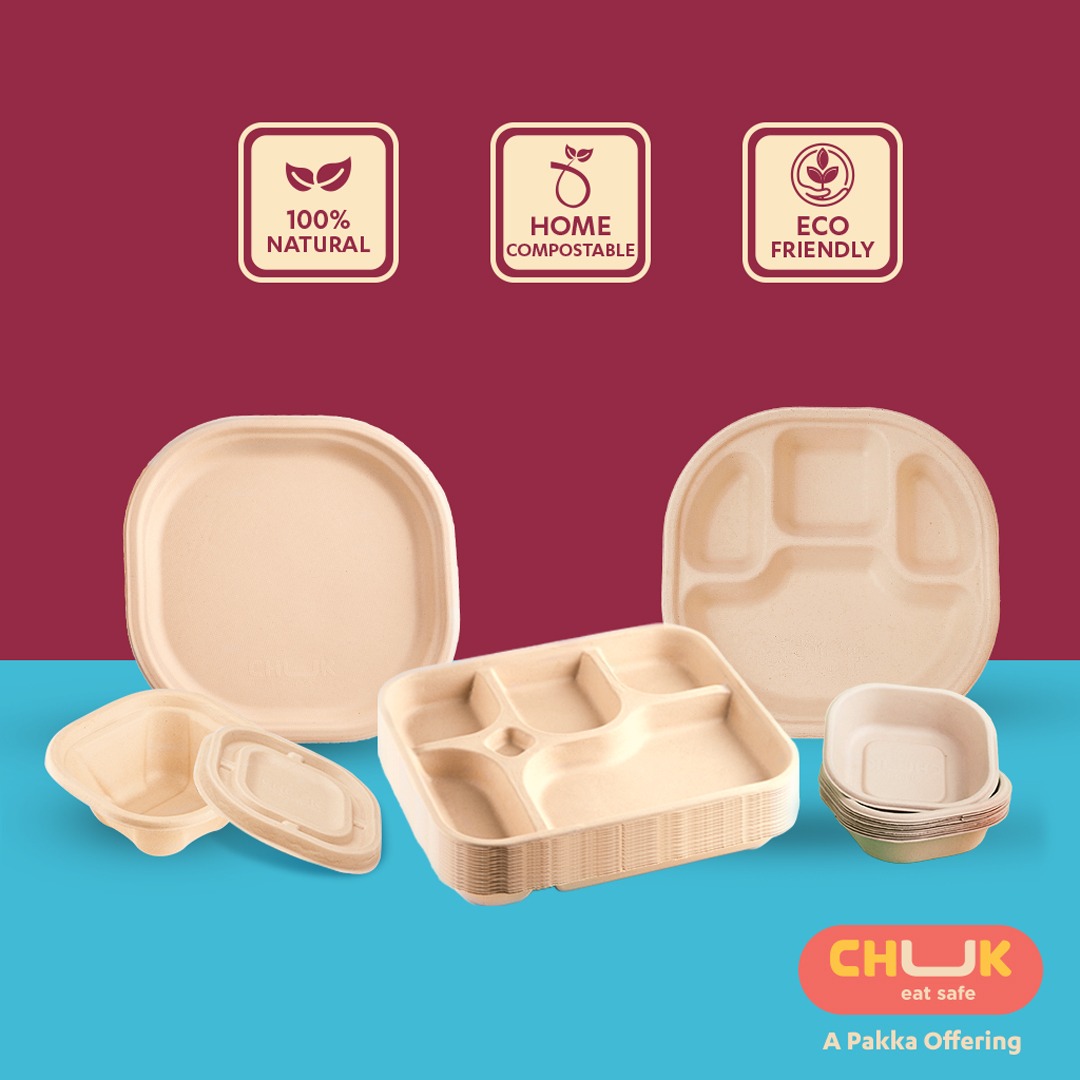Why is Compostable Tableware a Solution to Combat Landfills?
Ever felt like our planet is drowning in non-biodegradable packaging material, such as wrappers and takeout containers? Well, you’re not wrong. Single-use tableware is a huge culprit in our growing landfill crisis, but don’t fret! There’s a quirky, green solution on the horizon: Compostable tableware. You can think of it as an eco-friendly alternative that we didn’t know we needed until now. Amazing right! Just imagine who would have thought waste products from sugarcane and other compostable materials could transform into high-end tableware products? But that’s exactly what it is. Don’t believe us? Let us take you on a journey, where you will know how compostable tableware is countering the problem of overflowing landfills.
The Problem with Single-Use Packaging
Let’s face it, single-use tableware hang around for centuries, breaking down into tiny pieces that mess up oceans and soil. Every year, 8 million tons of plastic waste find their way into our oceans, turning them into a plastic soup. Now, that’s a staggering number. If you are living in city areas, then you might have seen the heaps of garbage mountains in the landfills outside your city. Well, guess what, single-use tableware made of non-biodegradable materials is a major contributor to that. Still feel that single-use tableware is not the problem? Let’s look into what makes them a threat to our environment.
Key Issues with Single-use Tableware:
- A really long time for decomposition: The main issue with single-use tableware is that they are made of materials that take years to break down. Sometimes, around 400 – 500 years. Now, think about it, if we continue using such materials in our functions, ceremonies, or house parties, the waste will just continue to grow. And this will go nowhere, ultimately leading to the garbage mountain growing in size. Imagine looking at a huge garbage from the balcony of your building every day. Well, that’s what the future could be for next generation.
- Contributor in Global Warming: The ever growing landfills also produce harmful greenhouse gases like methane produced due to extra slow decomposition. This has become a major contributor to global warming across the world.
- Bad for Birds and Marine life: Many stray animals and birds tend to eat these single-use materials along with the food stuck to them. This often leads to major health concerns and even death. The overflowing waste from landfills often ends up in oceans killing almost 1 lakh marine animals annually. Now that’s a scary stat. If you don’t understand this data let us break it down to you. It means every hour almost 12 marine animals are killed in the ocean.
- Polluting soil with microplastics: Last, but most scary threat is polluting soil. The single-use tableware breaks down slowly into microplastics and gets mixed with soil. Slowly through the food cycles the same microplastic has reached the blood of humans through plants and vegetables. Needless to say, the presence of microplastics in the human body can cause a lot of diseases.
But the big question is, how can we contribute to tackling this situation? Let us suggest a superhero that can change things.
Introducing Bagasse Tableware
Imagine eating your salad with a fork that won’t outlive you by several generations. Bagasse tableware is made from waste generated after extracting juice from sugarcane. These materials break down naturally, turning into nutrient-rich compost that can help grow more plants. It’s like the circle of life but for your picnic supplies!
Other Advantages of Compostable Tableware:
- Reduced Landfill Waste: Keeps your dinner remnants from contributing to the landfill mountain.
- Nutrient-Rich Compost: Feeds the soil, making your garden (and planet) happier and cleaner.
- Contribution to Circular Economy: Chuk, which manufactures bagasse plates from sugarcane residue also contributes to the circular economy. They not only reduce environmental waste but also replace traditional tableware with aesthetic compostable tableware. This helps both the economy and the environment.
Case Studies
The Green Plate Café, Mumbai
In Mumbai, the Green Plate Café, a trendy eatery in Mumbai’s bustling Bandra neighbourhood, decided to embrace sustainability by adopting compostable tableware made from bagasse, a byproduct of sugarcane.
Green Café, Pune
Green Café, a popular eatery in Pune, decided to support the city’s composting program by switching to compostable tableware. They replaced their traditional plastic and styrofoam plates and cups with compostable ones made from bagasse, a byproduct of sugarcane.
Flower Market, Coimbatore
The bustling Coimbatore Flower Market, a hub for fresh flowers and plants, decided to participate in the city’s initiative by adopting compostable tableware for vendors and customers.
How to Make Compostable Tableware a Part of Your Life
Ready to join the compostable crusade? Here’s how you can get started:
- Evaluate Your Needs: Take stock of the tableware your business needs and find compostable alternatives.
- Partner with Vendors: Look for suppliers who specialize in eco-friendly products such as bagasse plates and tableware.
- Educate Your Staff and Customers: Spread the word about the benefits of compostable tableware and proper composting practices.
- Monitor and Adjust: Keep an eye on how your compostable tableware program is working and make changes as needed.
Conclusion
Switching to compostable tableware is a powerful step towards reducing landfill waste and promoting environmental sustainability. With companies like Chuk turning sugarcane waste into sturdy, compostable tableware, we can all play a part in creating a cleaner world.
So, why not give composting a whirl? After all, in the grand story of environmental sustainability, compostable tableware might just be the quirky, coming-of-age hero we didn’t know we needed.
And remember, if composting had a motto, it would be: “Turning your trash into tomorrow’s treasure—one bagasse plate at a time!”


